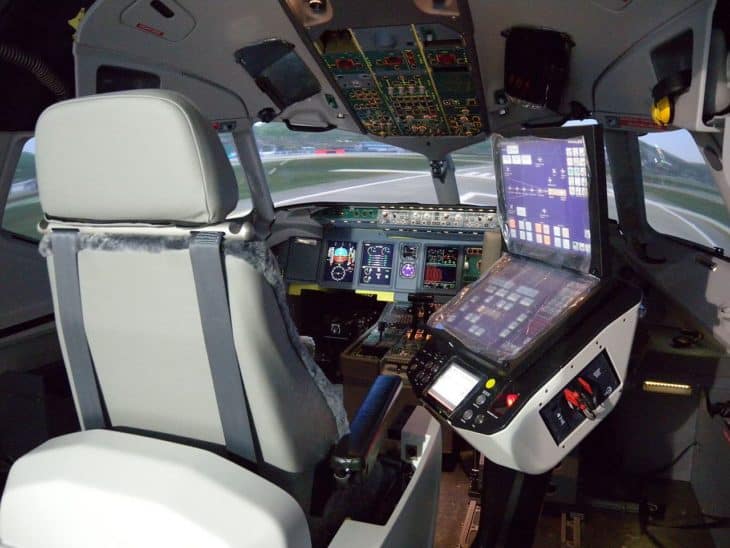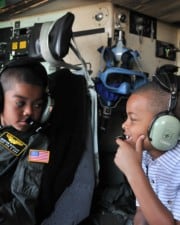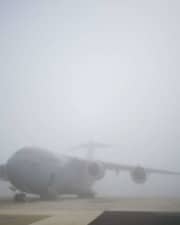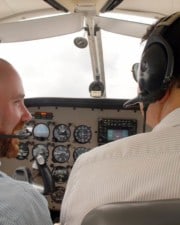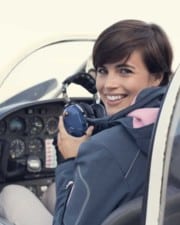If you plan to be a pilot some day, a flight simulator is going to be a big part of your life. Flight simulators do what their name implies: they teach you how to fly a plane by giving you some realistic experience before you actually get in the cockpit. If they sound like a lot of fun, you’re right but they do much more than just allow you to enjoy some fun at the wheel. They are also there to teach you some very important things about flying.
The Main Types of Flight Simulators
Flight simulators are usually one of two types: a flight training device, or FTD, which doesn’t move and is rated with a number instead of a letter; and a flight simulator, which moves and is rated with a series of letters.
FTDs are rated from 1 to 7 with 7 being the most sophisticated. Technically, the word “simulator” only applies to those devices that move and they are classified with the letters A through D.
With flight simulators, the letters refer to their level of sophistication just as the numbers do with FTDs. However, with simulators, the lower the letter is, the more sophisticated the device, so a simulator with the letter D will surpass a flight simulator with the letter A.
The system used for FTDs and flight simulators can be a little on the confusing side but once you get into flight school and begin using them, they seem a lot less complicated.
There are seven types of flight training devices and four types of flight simulators. Although they all perform the same basic functions, they vary according to the tasks they’re able to do and they include the following types.
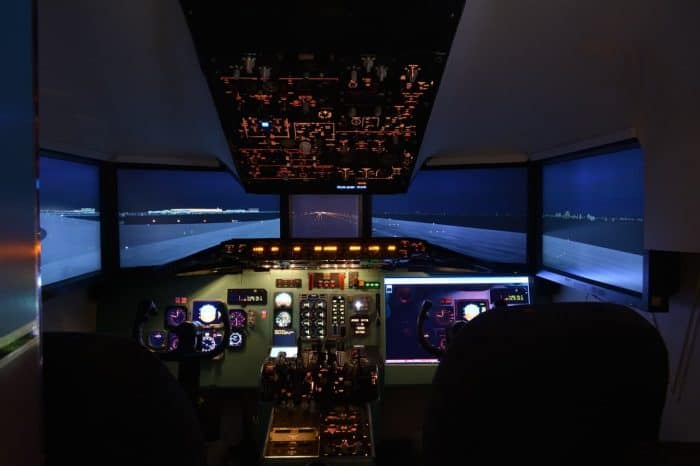
Flight Training Devices (FTD)
Level 1 FTDs
Level 1 FTDs no longer exist but did at one point. A few of the older ones are still around, but they are no longer being manufactured. These FTDs include a variety of devices that are no longer being made and cannot be grouped into any other category or level.
In fact, the FTDs included in levels 1 through 3 are still allowed to operate, thanks to special privileges, but they are no longer manufactured and placed in flight schools.
Level 2 FTDs
Level 2 FTDs also do not exist, although they did exist at one time. The only ones that are still in use are older ones that are still owned and operated by the original owners.
The Level 2 FTD began the tradition of computer-based aviation training devices, or PCATDs, even though they are no longer known by this name. Still, they are very significant because their origin includes the start of more advanced computer-based types of flight training devices.

Level 3 FTDs
FTDs at this level, much as with the ones in levels 1 and 2, are no longer manufactured but can still be found in places where the original owners still have them.
They were originally part of a group of advanced aviation training devices, or AATDs, which is one of two categories under this type of FTD. The other category is the basic aviation training devices, or BATDs.
Of the two types of aviation training devices, the AATDs are a bit more sophisticated but they are still ineffective in certain situations including unusual altitudes, circle-to-land maneuvers, training in visual conditions, and circling approaches.
You can, however, log flight experience for various types of licenses with this type of ATD. This includes up to 50 hours for a commercial rating, 20 hours towards an instrument rating, and 25 hours for your ATP rating.
BATDs have limited capabilities but you can log flight experience with feats such as approaches even though you only get 10 hours towards an instrument rating, 2.5 hours towards a private pilot certificate, and no hours towards an ATP certificate.
It is important to remember that both AATDs and BATDs are qualified subjectively, which means that the FAA examines the device and either approves or disapproves it.
Because these two types of devices are not flight training devices in the technical sense, it is not a requirement to have engineering reference data as other devices do.
Level 4 FTDs
In order to be effective, Level 4 FTDs do not have to have an aerodynamic model but still need accurate systems modeling. They are partly task trainers and allow you to use convenient touchscreens for tasks that involve flight management systems or instruments. A Level 4 FTD also has no control yoke.
Level 5 FTDs
These FTDs represent “classes” of aircraft such as multi-engine, single-engine, etc. You need a document called a qualification plus an approval guide that lists the design criteria of the FTD.
With Level 5 FTDs, devices really start to look just the same as the planes that you are learning to fly and there is even a control yoke included. The Level 5 FTDs require systems modeling and aerodynamic programing. They can represent either a specific model of aircraft or a family of them.
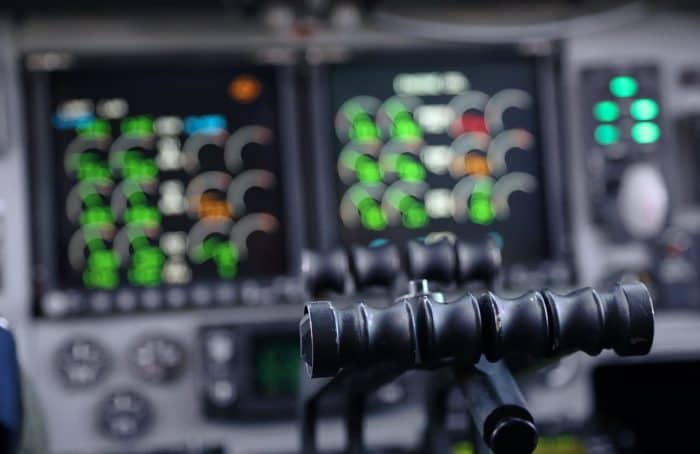
Level 6 FTDs
Level 6 FTDs are very realistic, in part because they involve very expensive aerodynamic data. To operate these FTDs, a physical cockpit, model-specific aerodynamic programming, and control feel are required.
These FTDs need to be specifically geared towards the type of aircraft you fly. This includes both actual functions and spatial relations.
As with Level 4 FTDs, you have to have a qualification document and approval guide to effectively use the devices and they are even more sophisticated devices than the FTDs with lower number ratings.
Level 7 FTDs
Level 7 FTDs refer to helicopters only and are always model-specific. You need a vibration system to operate them and they require all applicable flight controls, aerodynamics, and systems in order to be effective. Level 7 FTDs are also the first types that need a visual system.
Much as with FTDs, flight simulators have levels that barely exist. Flight simulators are categorized in the following ways:
Simulators
Level A Simulators
Today, there are only about a dozen or so of these simulators but the Lockheed JetStar, which was one of the first business jets on the market, uses this type of simulator.
Their visual systems are not very sophisticated and they provide very little data for simulating ground effect. They are made for airplanes only and not other types of aircraft. They require motion systems that have a minimum of three degrees of freedom.
Level B Simulators
There are currently only 12 to 15 Level B simulators in the United States, one of them delivered by a company called Frasca International. A Level B flight simulator provides 80% of your initial training for a type rating and 100% of re-currency training for those who have circle-to-land privileges.
An example of a Level B simulator is the one found at the University of Alaska, which the manufacturer calls a Level B Plus. It also has circle-to-land capability similar to a Level C simulator even though it does not fall into the Level C category.

Level C Simulators
Level C simulators have lower transport delay, or latency, than the previous two levels and they need a motion platform that includes all six degrees of freedom. They also have visual systems that require an outside-world horizontal field of view of a minimum of 75 degrees for each of the pilots concerned.
In the United States today, there are roughly 230 Level C simulators being used. They offer better backdrop and tighter tolerances on data and they provide great training for landing, circle-to-land capability, and instrument currency.
Today, more and more pilots are using Level C simulators and many experts believe that Level B and Level C simulators have only subtle differences.
Level D Simulators
You can do everything on a Level D flight simulator and even sophisticated airlines can enjoy the simulator’s full type ratings. Today, roughly 400 to 450 of these simulators are in existence and they have tighter performance tolerances and much better data performance. Daylight scenery is also required with these devices, much as with some AATDs.
Level D simulators require all six degrees of freedom and an outside-world field of view of a minimum of 150 degrees with their visual system. They also require a distant-focus display and realistic cockpit sounds as well as several visual and motion effects.
Because this is the highest level of FFS qualification available, you have a right to expect an excellent, high-quality, and useful device and this is exactly what you get every time.
Other Types of Flight Simulators
There are also some specialty flight simulators currently in existence. One of them is the Vertical Motion Simulator, or VMS, that is operated by NASA in Ames, California, which is near San Francisco.
It consists of a very large-throw motion system that includes 60 feet of vertical movement. The VMS has been used in an early shuttle flight for various functions.
The Environmental Tectonics Corporation in Philadelphia, Pennsylvania, and AMST Systemtechnic GmbH in Austria manufacture a type of simulator that is used for disorientation training and has full freedom in yaw. The biggest of these simulators is found at the TNO Research Center in the Netherlands.
Related Posts
